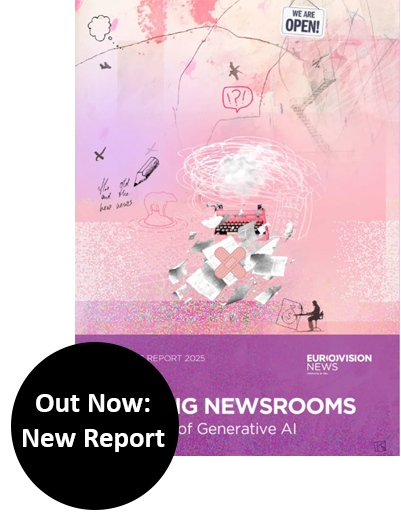Middle management in companies more often than not suffers from its infamous reputation. They are branded as rule-abiding busy bees, nitpickers who stick to processes just as much as they stick to their own chairs, managers, definitely not leaders. If they were, they would have long been promoted to the top – or so it is taught in many a business school. Former Siemens CEO Peter Löscher once spoke of a “clay layer,” the term even survived his own career in the company. A word that is like a slap in the face of all those tireless getting-things-doners who not only keep the company running on a daily basis, but also strive for constant improvement and overhaul, whether there is a crisis or not.
In the media industry, bosses are apparently no longer so sure about that clay layer. In the new “Journalism, media and technology trends and predictions” report by Nic Newman, which the Reuters Institute in Oxford publishes regularly at the beginning of the year, top managers were at least refreshingly self-critical about their own capacity to generate top ideas. Only about one in four (26 percent) of the 234 executives surveyed from 43 countries said they were convinced that top management generates the best ideas. The problem, as Nic Newman frames it: Innovation might not come from the top, “but companies are still run that way”. The report is not representative, but it is a must-read in the industry precisely because the respondents tend to be leaders who are particularly concerned about progress.
But where do they see innovation coming from? Nearly three-quarters revealed that data and audience research were most likely to give them a leg up, 68 percent bet on mixed teams from different areas, and still just under one in two admitted to borrowing the best strategies from other media companies. Okay, according to the survey, editors-in-chief and media managers trusted middle management as such even less (17 percent) than they trusted themselves. But who meets in the mixed teams, who evaluates audience data and derives strategies from it, who attends the relevant industry meetings, reads up on foreign material and then reports to the C-level? That’s right, in the very most common case, it’s the mid-level.
It is often those who are not celebrated as heroes in any industry publication and who neither management literature nor research has an eye on. They are the ones who are closest to the difficulties – and often therefore to the solutions. But they are also the ones for whom demands from employees and customers alike pile up into a sandwich of expectations. They are expected to be both operationally reliable and to think strategically and manage change. And if something goes wrong, it’s up to them to pick up the pieces and rebuild them into something else – in management-speak this is coined as “celebrating failure.
This layer of dedicated and loyal drivers of innovation, many of whom are at an age and in situations where family work demands additional work from them, is – no surprise – most at risk of burnout. Lucy Küng, who researches cultural change in media companies that go digital, has revealed this in countless interviews, including in her latest book: “Hearts and Minds: Harnessing Leadership, Culture and Talent to Really Go Digital.” This results in a huge brain and talent drain, she emphasizes again and again.
Yet many managers consider the mid level worthy of support only as long as they themselves are part of it. As soon as they have made it into top positions, they recoin themselves as visionaries. Gianpiero Petriglieri, a professor at INSEAD Business School, calls this “leaderism.” Instead of valuing reliable and constructive management, which is so necessary especially in times of crisis, he says, people celebrate visionaries whose ideas all too often go down with them. The glorification of leadership on the one hand and the devaluation of management qualities on the other is a dangerous pair of opposites that is still taught, but does more harm than good, especially in crises, he eloquently describes in the essay: “Why leadership isn’t a miracle cure for the Covid-19 crisis (and what can really help).” It is time to put less hope in leadership and more humanity into management, Petriglieri said. Judging by the “Trends and Predictions” report, many media managers already understand this. Humility can be the first step toward innovation.
This text was first published in German with Hamburg Media School Blog on 15th January 2021, then translated with www.DeepL.com/Translator and edited.



